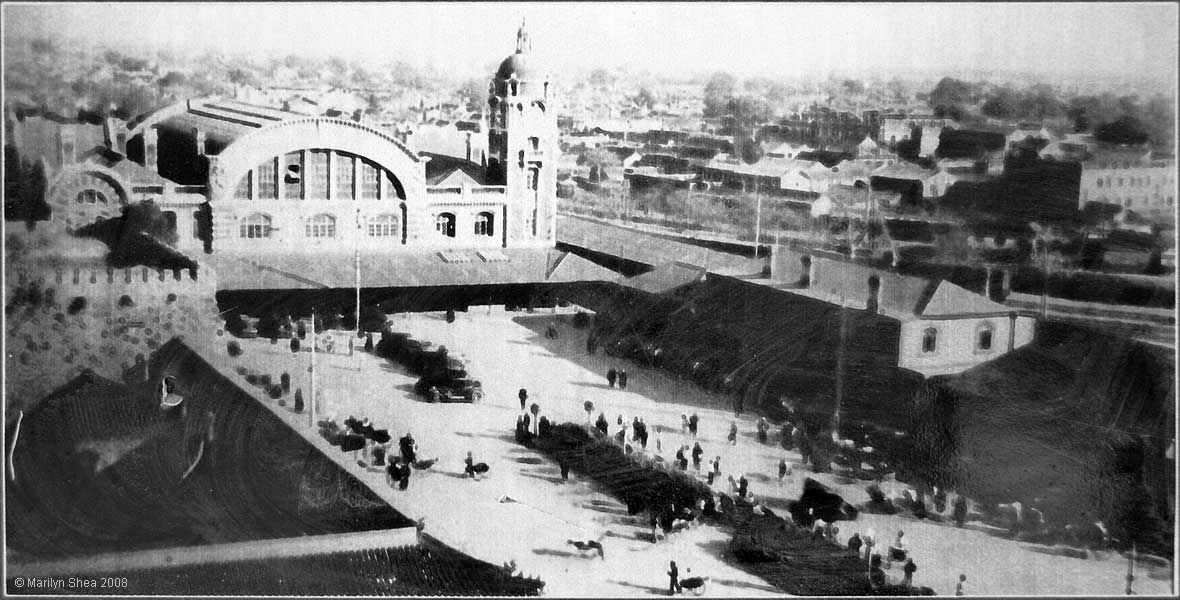 |
| The Zhengyangmen Railway Station (Zhèngyángmén) was built by the British in 1911. It served the Beijing-Fengtian Railway, now known as the Beijing-Shenyang Railway which went to Shenyang 沈阳 (Shěnyáng), formerly called Fengtian (奉天 Fèngtiān) by way of Tianjin.
Fengtian Province (奉天省 Fèngtiānshěng) was renamed Liaoning Province in 1929. When the Japanese invaded Manchuria (the northeast of China), they changed the name back to Fengtian. In 1945, it was again changed to Liaoning Province. There are a number of reasons that the province, by any name, is important. The Qing Dynasty was Manchurian. Their capital was in present day Shenyang. In 1644, when they overthrew the Ming Dynasty, they moved the capital to Beijing. The Emperor and the court made regular visits to Shenyang as it was still their power base. Throughout the Qing Dynasty, family-tribal rivalries and politics colored the policies, marriages, and inheritance of the throne of China. Manchuria includes the present day provinces Liaoning, Heilongjiang, Jilin and part of eastern Inner Mongolia. It also included areas of what is now Russia. The entire area is rich in natural resources, from coal to iron ore. Major industrial development began in the 1800s. By the 1900s the infrastructure and production was a very tempting target. The British built the railway to facilitate trade with the area. The link to Tianjin, a major port, allowed easy export to the West. The link to Beijing allowed the Chinese to move goods to the capital more easily, and then transport them to other areas of China. The Japanese saw Manchuria as a military target and invaded in 1931. The natural resources and heavy industries of Manchuria, or Manchukuo, as they called it, allowed them to build their military armaments and prepare for war. The Russians managed to get a chunk through the Treaty of Aigun signed in 1858. The Russians were not only interested in the richness of the area but wanted to secure their access to the sea in the east. Originally, the Beijing-Fengtian Railway only extended to the outskirts of Beijing, but during the Boxer Rebellion or Uprising which began in 1898, the face of Beijing changed. When the Eight Allied Armies invaded Beijing to relieve the legation quarter, which was under siege, the set up headquarters at Tian Tan (Temple of Heaven Park) and the British built a spur line to connect to the Beijing-Fengtian Railway to receive supplies from Tianjin. As they advanced into Beijing, the railway line was extended to reach Qianmen. At that point, it would serve both as a conduit for supplies and a means of quick evacuation should the situation sour and retreat was necessary. While on a previous page you saw the results of the bombardment of Beijing, much of the destruction to the walls at that time was for purposes of building railway lines, roads, and general transportation needs. For the most part, the walls were intact. Openings were created where necessary. It wasn't until 1949 and the founding of the People's Republic of China that the walls were totally removed and most of the watch towers and gates torn down. During the construction of Tian'anmen Square, railroad tracks were removed from the center city and diverted to the eastern and western sections of Beijing. Zhengyangmen Station escaped destruction and in its present incarnation houses offices, shops, an Internet cafe, and at one time, a McDonalds. Today, bullet trains that connect Beijing with Tianjin and Shengyang using the routes honed by the British in the 1800s. |
 |
http://hua.umf.maine.edu/China/HistoricBeijing/Qianmen/index.html
Last
update: August 2009
© Marilyn Shea, 2009